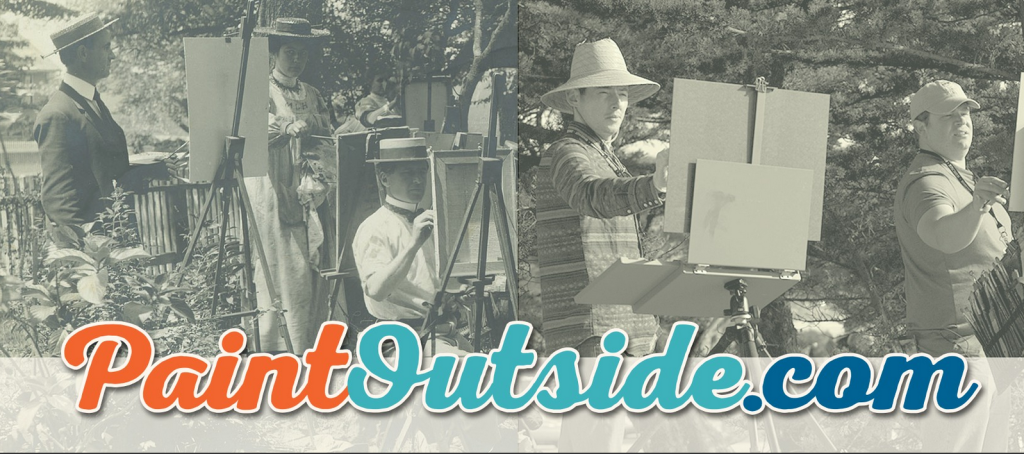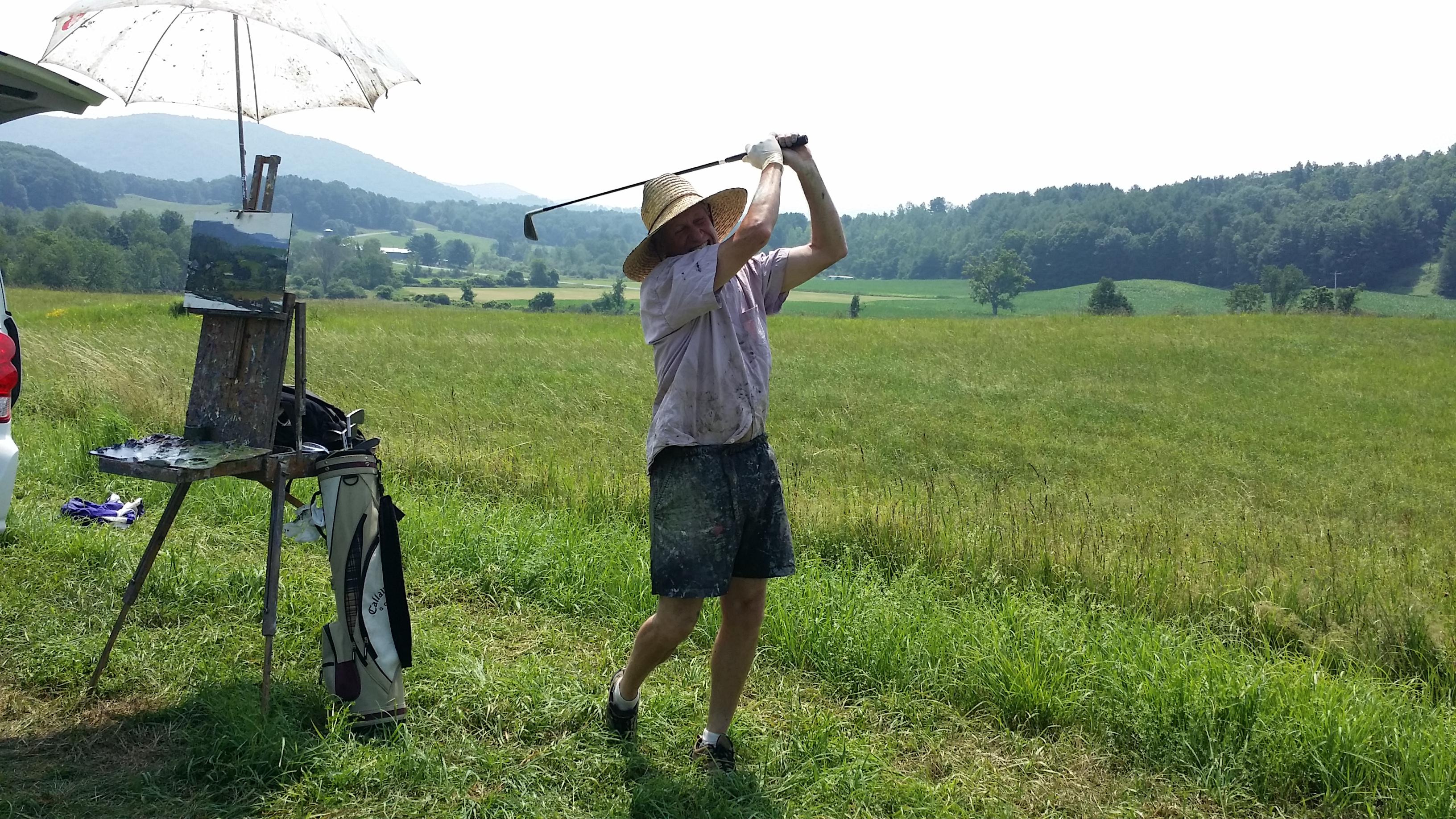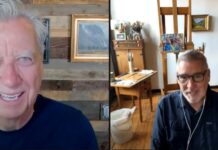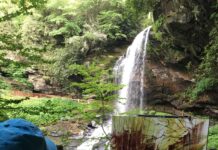Why Plein Air Painting is “The New Golf.” Publisher Eric Rhoads explains the plein air movement, why thousands are joining, and what you can do to help others discover outdoor painting.
Two years ago, during a convention of artists who paint outside, I declared that the “plein air” painting movement is “the new golf.” Plein air is a French term that literally means “outdoors,” and it was used in France in the late 19th century to describe the Impressionists, who went outdoors to paint en plein air. The term stuck, and today there are an estimated 250,000 artists around the globe who enjoy painting outside. This movement has blossomed significantly in the last decade, from about the time we launched PleinAir magazine, which is now the top-selling* art magazine in America.
So why is plein air painting the new golf?
Simply put, like golf, plein air painting is for people who love to be outdoors, want something to challenge them, love the social aspects of their recreation, want to spend time in beautiful and often exotic locations, and want something that gives them some exercise without requiring substantial physical effort.
The difference, of course, is that nature painting is not a competitive sport, or a sport at all. But, like golf, it’s a hobby for most and a profession for some.
Also like golf, painting outside takes time and tends to appeal to people who are looking for ways to fill their days as they have reduced their work schedules or retired. Plein air painting is huge among retirees although, just like golf, there are also lots of young people interested.
According to demographers, people tend to work hard all their lives to make a living for their families, but then, at about age 45, start thinking about all the things they want to do that they haven’t done enough of. That often includes traveling, and expressing their creative side. As people approach 50, many are setting time aside to develop their creativity, which may include things like photography, woodworking, crafting, and, of course, painting.
When people find plein air painting, they discover that the painting process itself is only a small part of it. Outdoor painters tend to join local groups to go out once or twice a week with others in their community, they travel to workshops to learn from other painters, they go on trips with friends to paint in beautiful places, and they take their portable painting kits with them when they travel on business or leisure. People involved in the plein air movement have lots of social opportunities and can easily form friendships.
Though golfers return from their game telling of their great shots — or magnetic trees that attracted their golf balls — painters return with stories of deer leaping across the landscape they were painting, eagles flying overhead, and curious onlookers who wanted to watch what they were doing. Though there is no scorecard to bring home, painters return with an outdoor painting that can forever hang as a memory of a trip or a special place.
Most golfers will never see national recognition. Some will opt for local tournaments, but few will ever become professionals. They don’t golf as a profession, they golf for enjoyment. Some play badly their entire lives but still enjoy the challenge of perfecting their techniques — the challenge is part of the fun.
Similarly, most painters don’t become professionals; they simply paint because they have a creative story they want to tell about the scene they painted and why it spoke to them. They express themselves on canvas, and it’s a lifetime of challenges, perfecting techniques, and always making a better painting. Some will become professionals, traveling the circuit of plein air events or selling their works in local or national galleries. The goal for most, however, isn’t to create a masterpiece, it’s to reflect that special moment in time with their own interpretation and have something to show for it that can hang in their home forever.
I went through a phase as a golfer and spent a few years obsessed with the game. What I liked most about it was being outside and being with friends or business associates. But once I discovered painting, I sold the house on the golf course and opted for a home overlooking a local park, which afforded me hundreds of painting opportunities just steps away. Though I enjoy golf, my free time is limited, so I choose painting because it’s more satisfying for me.
Not everyone is sports-oriented or competitive. Not everyone wants to get involved in hiking, biking, or extreme sports, yet they want to spend time outside. For some who wish to express their creativity, outdoor painting can be their golf.
At PleinAir magazine, we don’t take credit for the explosion of the outdoor painting movement. We were simply there to reflect it and, with our magazine on newsstands nationwide, to help others discover painting. The fact that it has become a top-selling magazine, however, is further evidence that people are curious about this movement.
Back in April I introduced the Plein Air Force, designed to enlist people who paint outside to help others find this satisfying hobby by speaking at local schools and community centers and showing our documentary Outside the Lines: Revolutionaries in the Art Movement, which tells the story of plein air painting through history to the present movement. My goal is to help more people find plein air painting, and I’ve asked people who do it to share it with others.
Plein air painting truly changed my life. I have tried lots of hobbies over the years, but I’ve landed on outdoor painting as my true passion outside of my work life. I now take my paints on business and leisure travel, I have made hundreds of new friends and some very close friends, and I get to go to exotic places. Or if I just want to paint around my hometown, there are dozens of people I can call to go painting with me. Sometimes I paint to be alone. Painting melts stress.
Best of all, I’m truly challenged. Painting is fun and, like golf, sometimes frustrating, yet I’m always looking to better myself. I’ve been plein air painting now for 13 years, and I can see my growth year after year. And an added bonus is that my work now hangs in three galleries, and I sell a few pieces a year to fund my supplies and travel.
I keep most of my outdoor paintings (often referred to as studies) because I want to remember special moments painting windmills in Holland, fields of lavender in Provence, the Eiffel Tower in Paris, and dozens of other locations, including my beloved Adirondack Mountains, my muse. When you’re painting in a spot, it’s not a quick snapshot, it’s an in-depth observation. You stand before your subject for a couple of hours and see things you never would have noticed otherwise. Plus, you have encounters with others who stop to talk or animals that wander into the scene. People don’t walk up to you to chat when you’re snapping pictures, but they do when you’re painting. Since I love people, this is another added bonus, but if I’m not in the mood, a pair of earphones does the trick.
Most people see paintings and tell themselves they don’t have the talent to paint. I consider it our role to encourage people and help them understand that anyone can learn to paint. Though most of us will never take the time or have the dedication to get to the level of the top professionals, it’s important to communicate that each professional started with the basics and grew from there. Few people have natural talent — for most, it has been developed through time, lessons, and practice. By helping people overcome their mental barriers, we can interest them in trying painting, and it can transform their lives.
I want others to discover what thousands have already discovered about the plein air lifestyle, so I put together a website called PaintOutside.com, where people who want to learn plein air painting can learn for free. We’ve produced two in-depth series of free, step-by-step video lessons.

The first includes the basics of painting, so people can master that before they try to go outdoors. It covers things like using paint, materials needed, mixing colors, doing your first painting, etc. The second series is an actual step-by-step video of the plein air painting process, explaining what you need to go outdoors, and how to paint on location. (The free video lessons will be up soon, but people who register now will be notified when they are ready.) And there are no strings attached — no credit card required, no charge. Just free lessons.
The website also has a place for people to find local artists who teach. (Artists can register free to be listed as teachers or painting buddies in their local area by visiting PleinAirForce.com.) It’s all about helping people discover the plein air painting lifestyle.
Is plein air painting the new golf? The community of plein air painters is growing fast because it offers many of the same benefits for those who don’t want to chase a golf ball but want to enjoy the outdoors, the challenge, the beauty, and the friendships. If you haven’t tried it, we highly recommend it. You can find free lessons at www.paintoutside.com.
Note: A blog by artist Greg Summers about the New Golf: http://rgregorysummers.com/the-new-golf/
* Barnes & Noble national sales report showing PleinAir is the top-selling representational art magazine in America.





I’m another plein air evangelist, with a slightly different emphasis in that I’m an urban sketcher – I draw any aspect of life,, even if not beautiful on the face of it. I also do my best to remove the mystique surrounding “talent” by passing on tips and techniques (watercolour only) through my website and classes.
Urban sketching is a huge movement and very much part of the world of plein air. A sister perhaps, its really reflecting what you see using different materials. But we love it!
[…] champions of the movement to get people to go outside and paint. He has been known to say “Painting is the New Golf”. I agree with him. Painting outside (solo or with friends) is an incredible and rewarding […]